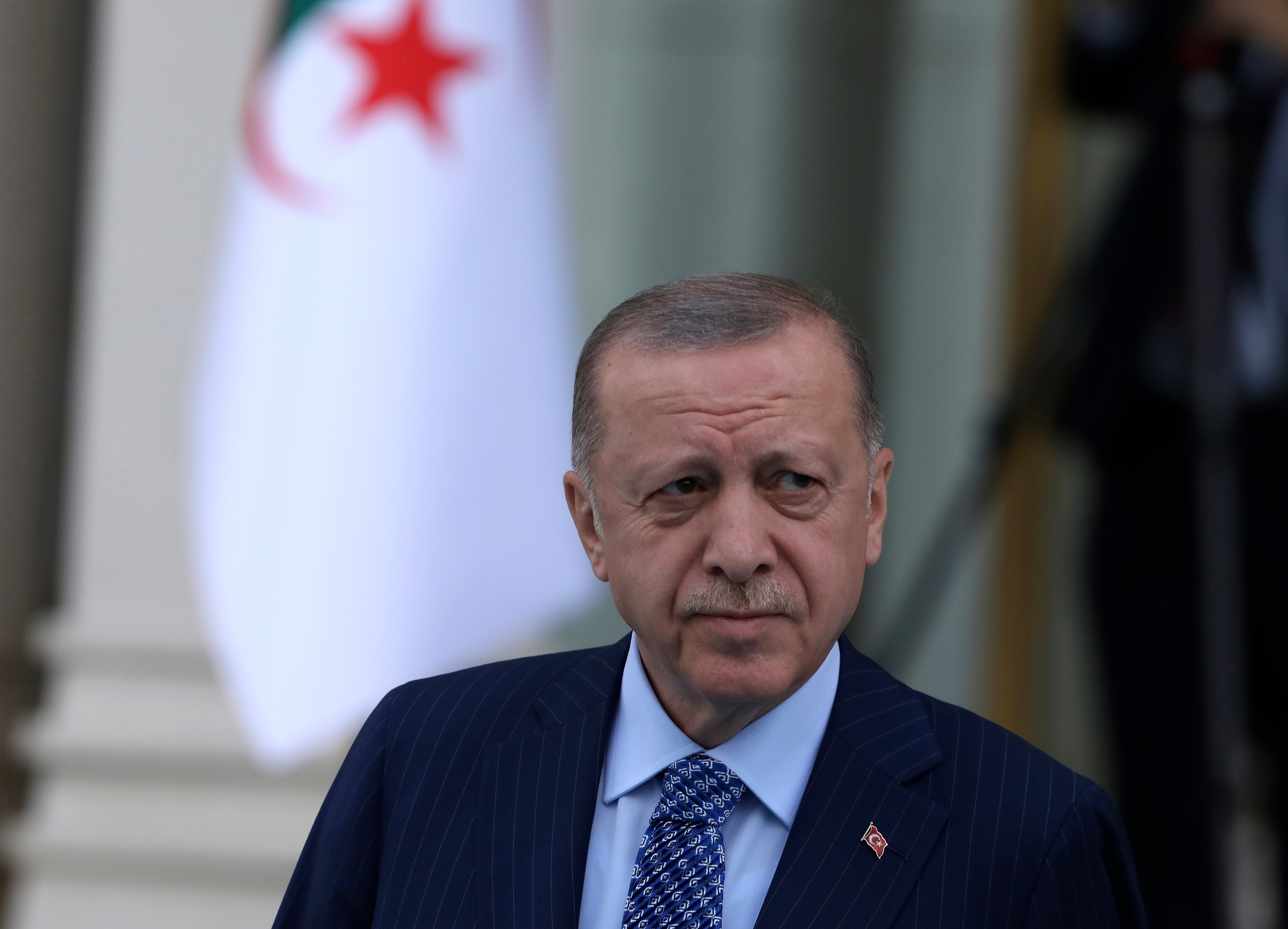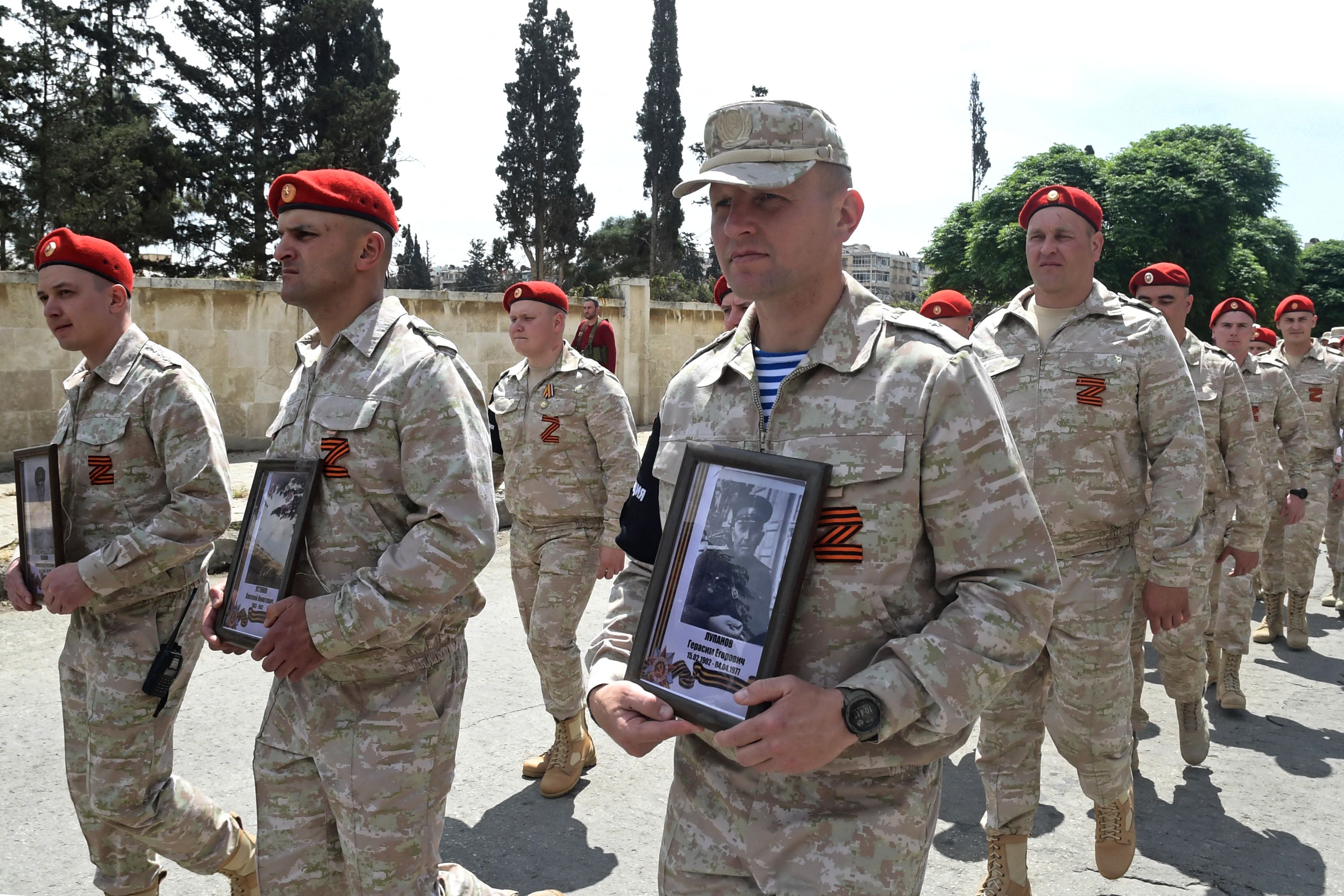As the world watches Ukraine, Turkey prepares a military move into Syria
President Recep Tayyip Erdogan has given strong signals that a fresh cross-border military operation is imminent

Your support helps us to tell the story
From reproductive rights to climate change to Big Tech, The Independent is on the ground when the story is developing. Whether it's investigating the financials of Elon Musk's pro-Trump PAC or producing our latest documentary, 'The A Word', which shines a light on the American women fighting for reproductive rights, we know how important it is to parse out the facts from the messaging.
At such a critical moment in US history, we need reporters on the ground. Your donation allows us to keep sending journalists to speak to both sides of the story.
The Independent is trusted by Americans across the entire political spectrum. And unlike many other quality news outlets, we choose not to lock Americans out of our reporting and analysis with paywalls. We believe quality journalism should be available to everyone, paid for by those who can afford it.
Your support makes all the difference.Turkey is preparing for yet another large-scale incursion into northern Syria, in what would be its fifth major military offensive into its southern neighbour in six years.
Military equipment has already been placed along the Syrian frontier, with artillery shells pounding positions held by Syrian Kurdish armed forces in recent days. Senior officials and analysts close to the government in Ankara say a new operation against Syrian Kurdish groups will likely commence in the coming weeks in hopes of concluding it before the 29 June Nato summit in Madrid.
“As I always say, we will also crack down on them suddenly overnight, and we have to do so,” Turkey’s President Recep Tayyip Erdogan told reporters travelling with him on Monday.
“God willing,” he said after a cabinet meeting last week, “those operations will begin as soon as our Turkish Armed Forces, intelligence and security forces complete their preparations.”
His remarks have been widely reported by government-controlled Turkish media outlets, which is filled with coverage hinting at an impending military incursion.
“There is going to be another operation in Syria,” Yusuf Erim, an analyst at TRT World, Turkey’s English-language public television station, said in an interview. “I think it will happen in the month of June ahead of the Nato Summit.”
The possible military operation comes at a particularly opportune geopolitical moment for Mr Erdogan. Russia, which is a major military and political power in Syria, has been forced to redirect its attention and resources toward its ongoing attack against Ukraine.
In addition, Finland and Sweden are seeking to end decades of neutrality to join Nato, a move Turkey says it will oppose unless the two Nordic countries and Nato offer concessions which include reducing their ties to Kurdish leftist groups viewed as a threat by Ankara.
Turkey has provided some crucial diplomatic and military support for the campaign to defend Ukraine, winning it some support from the west even as it maintains amicable relations with Moscow – a balancing act that puts Ankara in the position of being courted by both sides in the conflict.
“Convinced that Nato has ignored Turkey’s security concerns, Erdogan appears to believe he now has the leverage to force concessions,” said Nicholas Danforth, a Turkey specialist at the Hellenic Foundation for European and Foreign Policy. “In Syria, he is trying to manoeuvre between the US and Russia for more room to go after Kurdish forces.”
Mr Erdogan already appears to be laying the diplomatic groundwork for a fresh cross-border offensive. He and Russian president Vladimir Putin reportedly spoke Monday about his plans. US national security adviser Jake Sullivan, in a conversation with Mr Erdogan’s chief adviser Ibrahim Kalin, “reiterated the importance of refraining from escalation in Syria”, according to a White House spokesperson.
Turkey, a member of Nato that has been at odds with other allies, has long sought to expand its footprint in Syria. During its October 2019 Operation Peace Spring, it launched a ground and air offensive that was meant to carve out a 19-mile buffer zone. But the assault triggered western sanctions on Turkey’s armed forces and was halted after a week.
Ankara hopes to lengthen and deepen a buffer zone inside Syria to draw some of the millions of Syrian refugees in Turkey ahead of elections next year in which immigration and migrants are proving volatile issues.

Control over northern Manbij would help towards creating a land bridge between areas of Syria’s northern Aleppo province that Turkey seized in 2016 to those in Hasakah province it seized in a 2019 offensive.
Turkey also hopes to weaken the Syrian Democratic Forces (SDF), among the armed wings of the autonomous ethnic Kurdish-led government that controls much of northeast Syria.
The preparation for a possible incursion into Syria is proving popular among some in Turkey. Pro-government voices are already beating the drums for an incursion as a salve to both domestic and international pressures.
“Is this operation necessary?” wrote Abdullah Sanlidag, in the pro-government newspaper, Yeni Akit, in late May. “Yes, it is necessary and essential against those grilling the government over refugees and constantly telling them that Syrians should go. It is required not only to silence the opposition and calm the public down, but also for the fight against terror organisations threatening our border.”
Among the likely targets of the incursion are regions of the northern Manbij pocket along the Euphrates River and the town of Tal Rifat. Both are controlled by the SDF.
Turkey and others consider the SDF strongly linked to the Kurdistan Workers’ Party (PKK), an outlawed separatist guerilla organisation which has fought against Ankara governments for decades. But the SDF has also fought alongside American, British and French military personnel against Isis, and continues to play a key role in maintaining order in northeast Syria as well as helping stamp out remnants of the jihadi group.
Any offensive will likely use the same combination of air units, including combat drones, and precision artillery as in Operation Spring Peace. Turkish-backed Syrian militias and Turkish army forces may be used as ground troops, although there is scant evidence of a mobilisation of personnel.
Scores of civilians and dozens of troops were killed in the 2019 conflict, and tens of thousands were displaced.
Syria’s Kurdish-led forces are reportedly already girding for a fresh incursion. Turkish television has aired drone footage showing what it described as networks of tunnels built along the border to prepare for an attack from the north.
The Syrian Observatory for Human Rights, a monitoring group, has reported fresh rounds of cross-border shelling hitting SDF and affiliated positions in recent days.
The Damascus regime, which lost control of Syria’s north a decade ago after launching a violent crackdown on a peaceful protest movement, has complained to the United Nations, calling Turkey’s impending military operation “a colonial act” meant to create “an outpost inside Syria”.

Nuri Mahmoud, a spokesman for the SDF-aligned People’s Protection Units (YPG), accused Mr Erdogan of whipping up a war to distract the Turkish public. Polls show that Mr Erdogan and his Justice and Development Party (AKP) are struggling against opponents ahead of elections scheduled for June 2023.
“The situation of people inside Turkey has become difficult,” he told the pro-Kurdish Hawar news agency. “The politics and the corruption that this regime pursues in Turkey could topple it if there were no war. That is why war is important for this regime, so it can impose a state of emergency inside Turkey and silence all opponents.”



Join our commenting forum
Join thought-provoking conversations, follow other Independent readers and see their replies
Comments